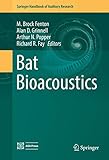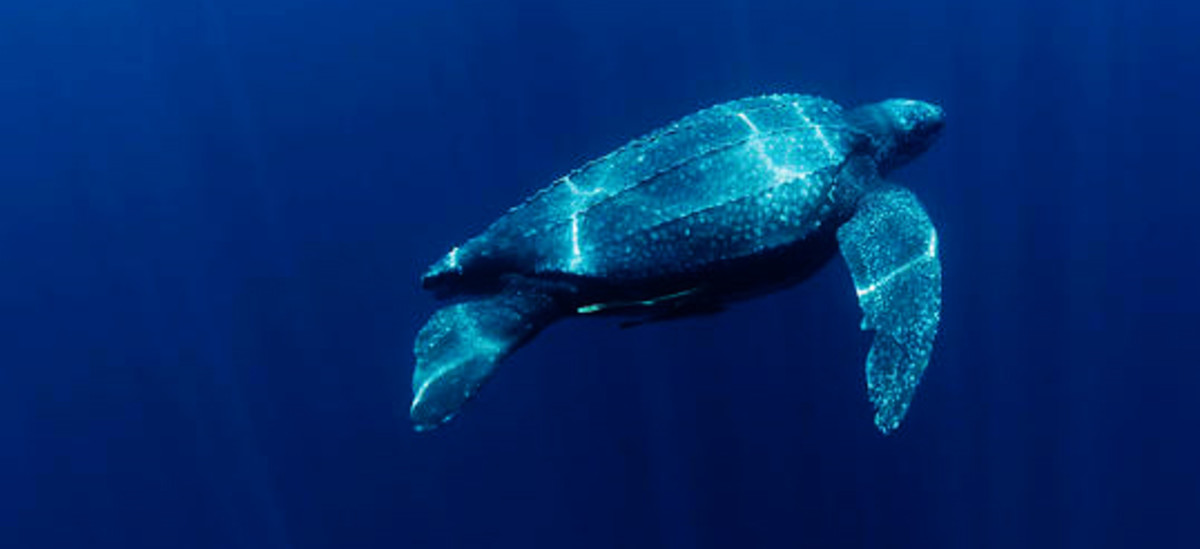- HubPages»
- Education and Science»
- Life Sciences»
- Endangered Species
How to Listen to the Sounds of Nature
Sitting Among the Silence of Nature
It is a beautiful day in Saguaro National Park, in Tucson, Arizona. The park is alive with the audible sounds of birds, and animals, of hoots, and chirps, and howls. Dusk arrives, and the jeep pulls over so we can watch the sunset. The birds fly overhead, and the sky begins to change from blue to a myriad of breathtaking colors, one could only imagine in an artist’s painting. The sun begins to set, there are no birds flying, and the air is filled with an unbroken silence and stillness.
There is hush, a quietness, a calmness that instantly dominates the park. With our eyes we see the altering colors of the rapidly changing horizon. With our ears, we hear nothing, only an ultimate quiet. The atmosphere is devoid of any noise that is perceptible to our ears. The silence permeates our soul, as we sit in awe among the animals who seem not to stir. It is a powerful moment. The sky darkens and the sounds of nature are heard once again.

The memory of that day, stay in my mind, more because of how it felt to hear nothing, than that I was watching the most beautiful of all sunsets, I have ever seen. The silence was very memorable, but most likely, the animals were communicating among their own species, at decibels that human ears can not pick up. So if a tree falls in the forest, did it make a sound? If the animals were in the park, were they still conversing among their own species? Were they making noise, just at a lower frequency, than our ears can pick up?
Bioacoustics and the Sounds of Nature
Bioacoustics studies sounds as a form of communication in non human animals. As technology improves and the ability to record sounds in nature became more available, scientists are learning more about our environment, and the impact and impairment we are causing in nature. Echolocation is used by bats, insects and dolphins and is part of bioacoustics.
Scientists have recorded and reviewed audio tapes of many animals. They are able to idenitify a species, calculate poplulation densities, correlated their evolutionary relationships, and determine the animal’s movements, This helps researchers,conservationists, and ecologists understand an animals survival and communication skills, and the effect humans have on the animals environment.

Animal Communication
Much of what has been studied is through underwater sounds. There are many difficulties in studying animals in their natural habitat without the interference of human produced noise. It is far easier to hear the natural sounds of marine life, where man has not invaded the animals domain as much through underwater microphones.
The study of bioacoustics goes back to the early to mid 1900’s. As recording technology became more advanced, so did the recording of animal sounds. The ASA, Acoustical Society of America which was started in 1929, as a way to increase the knowledge of animals sounds. There are many other organizations that have been started since, and assist in helping us understand animal communication. Some species that were previously thought to be extinct have been discovered through recording animal sounds.
Sounds in the Air and in the Water
Animal scientists have recorded birds, gorillas, and many other animals in their natural habitat. Over half of the 9,000 species of birds have been discovered through ornithologists who documented recordings of sounds in nature. At Cornell University, ornithologists, Arthur A. Allen and Peter Paul Kellogg have the biggest collection of wildlife noise in the world, called the Library of Natural Sounds. There are over 65,000 sounds recorded and each year approx 3,500 more animal sounds are added. Cornell has also researched whale sounds in conjunction with the United States Navy’s Integrated Undersea Surveillance System (IUSS). Using a large network of hydrophones (underwater microphones), scientists are learning a great deal about marine life and their communication and navigation underwater.
Echolocation is the ability of bats and some mammals of the sea that gives them the ability to create an image through the sound of echoes. They produce clicking sounds and as these sounds bounce back they can ‘see’ prey, obstacles and other information at a distance. Echolocation is also a form of navigation and communication. Bats and guacharo (oilbirds), use echolocation to navigate their way through darkness and to help them hunt for food. It is thought the shrew might also use echolocation to find food.
Echolocation
Dolphins use echolocation by emitting clicks and pulses at over 300 per second. Each click lasts approximately 50-128 microseconds. The dolphin receives the clicks back as sound waves in the form of a beam. The beam is projected in front of the dolphin under water, at a speed four and a half times faster than sound travels through air.
Dolphins release a focused beam of clicking sounds (sound waves) and then listen to the echo. From this they can determine the following about an object (such as a fish).
- size
- shape
- distance
- speed
- direction
- internal structure (depending on the object)
Bioacoustics - the sounds of Whales
Water Conducts Sound Very Efficiently
We started to understand echolocation during World War II and our use of submarines.
Bats target their prey by echolocation, just like the dolphins, but slightly less developed. They receive the clicks they emit back as echoes which indicate the distance, position, and type of objects in the bat’s environment. Because the bats system of echolocation is less developed than dolphins, bats will attack anything moving in the dark, even foliage, because they can’t distinguish exactly what they are seeing.
Water is an efficient medium for conducting sounds over distance. The deeper the water, the farther the sound can carry.
The humpback whale can emit sounds great distances. Whales and other sea life live deep within the ocean. The sounds they make are not audible to us, except through hydrophones (underwater microphones). The U.S.Navy started installing hydrophones on the floor of the oceans in the 1950s, originally to listen for enemy submarines. Today it helps researchers learn about whale songs and vocalizations.
Birds Do It, Bees Do It
Listening has taught scientists some very important things. It used to be thought that blue whales, humbbacks, fin, minke, Bryde’s and sperm whales in the Gulf of Alaska only spent the summer there. Now they know about 50”% of the population stays there all year. In the warmer part of the Pacific Ocean, bioacousticians, learned the Byrde’s whales are more populous than they once thought. Without bioacoustics, there is no way to see these animals who live in the depths of the ocean.
Bees communicate through the dances they do. Fish make sounds that can be heard underwater.
Adjusting Frequency Levels to be Heard
It is known that different species will communicate at different decibel and frequency levels to be heard above the other animals and noises. In one study with birds, known as the little greenbul, the captive birds were found to sing at lower levels than the birds who lived in open spaces. It is believed that lower frequencies send sounds more effectively through the dense forest, and also because the environment has competing sounds emitted from higher pitched insects. Using this same theory, scientists believe urban noises, which are usually at low frequencies, may be forcing birds living in this environment to switch to higher frequencies to communicate.
In U.K., scientists found that robins living in noisy metropolitan areas, changed their normal behavior of singing in the daytime, to singing at night to avoid the manmade noises humans have created. In Berlin, Germany, nightingales made their singing higher to counter the noise. It is known as the Lombard effect, when someone speaking or singing makes their voice higher to be hear. The interesting thing about the nightingales, is that they sing louder at morning rush hour on weekdays, than they do on weekend mornings.
Noise Pollution Exists in Water Too
Because the world’s oceans have twice as many and much more powerful ships since the 1960’s, the level of water noise for sea animals have increased also. Scientists at the Scripps Institution of Oceanography found a significant increase in underwater atmospheric noise near San Nicolas Island, off the coast of California. The increase in noise was ten times what it had been in the same area, when it was tested in the 1960’s. Scientists believe marine life is responding to the noise, the same way the birds are. These noises interfere with the natural echolocation frequencies they would use to communicate. Biologists already know, the orca whales, belugas, and blue whales have modified their clicks and calls. In some instances, the noises have forced some of these whales to leave their habitats and find new homes. The gray whales and their calves were seen in a lagoon off the coast of Baja, California. When a salt factory started construction, bringing more boats, noise and dredging activities the whales stayed away. After construction stopped, the whales returned. The return of the whales gives scientists hope that the adaptability of many animals will help them survive with these unnatural interferences. But some are worried that in the interim, or the continuance of noise pollution, may wipe out some species. The animals like orioles, sparrows, and reed warblers, who use low frequency sounds, like the sounds from human machinery, may not be able to switch to frequencies that are higher.
Noise Can Threaten an Animal's Survival
Toads, who re-emerge after burying themselves for six years, join in a simultaneous chorus to avoid predators are threatened by military jets flying overhead. The toads can’t hear themselves from the noises from the plane, and it takes up to 45 minutes for them to resynchronize themselves. By this time, coyotes and owls could have attacked the toads.
Nature embodied animals with an ability to communicate in ways superior to that of human beings. The intrusive noises from man is altering the soundscape and forcing animals to even change the frequency and switch their calls to adapt to the noises that interfere with their ways of communicating. Researchers believe some animals my have become extinct and some have their existence threatened by the unnatural sounds that invade their environment. Noise pollution, like all pollution is a toxin to the environment. The spectrum of noises from every animal on Earth, creates a symphony of sounds in nature. Even imperceptible noises have a purpose in its existence. Mating calls, calls of warning, and the ability to hunt and find their direction are done with sounds that man can not hear. If animals can’t signal others in their species, through their emitted sounds, their future may be threatened.

Natural Soundscapes are a Beautiful Part of Nature
Observing animals is not the complete picture. Sounds are an important natural resource. By educating ourselves about the sounds in nature we have so much to gain.We need to listen to them to learn more about the world around us. The payback for tuning into the nature might just be a healthier planet. All animals communicate within their species in ways we don’t understand, and can’t even hear. In the world of people, we communicate, but we also have noise. Bees buzz, leaves rustle, birds chirp, and the sound of rushing water make up a natural soundscape.
Man's Obligation to Reduce Noise
Animals use sound to woo mates, hunt, scare away predators, and find their way. Man made noise from machines, tools, planes, cars, and the like overpower these sounds and in effect, make them disappear. Animal and nature sounds are the sounds of life, of renewal, of a beauty that exists and is destroyed by man’s disturbances. Bioacousticians are trying to record as many sounds as they can before they disappear forever. Yet there are thousands of sounds that we probably don’t even know about. Noise pollution, deforestation, land and air pollution, and the many threats to wildlife are causing the loss of nature’s beautiful sounds that enrich our planet. There is always more to learn about nature, animals and our environment.







